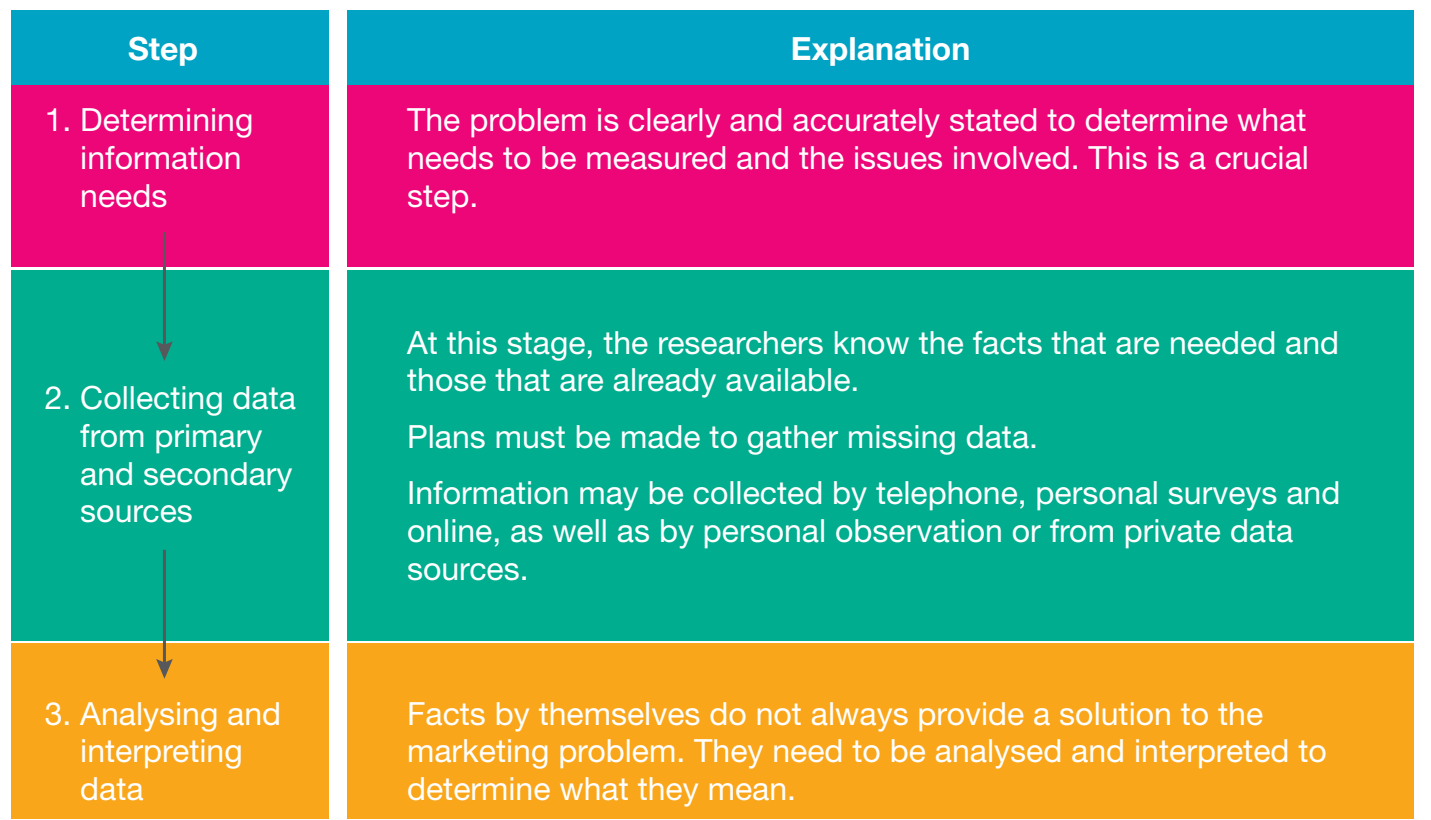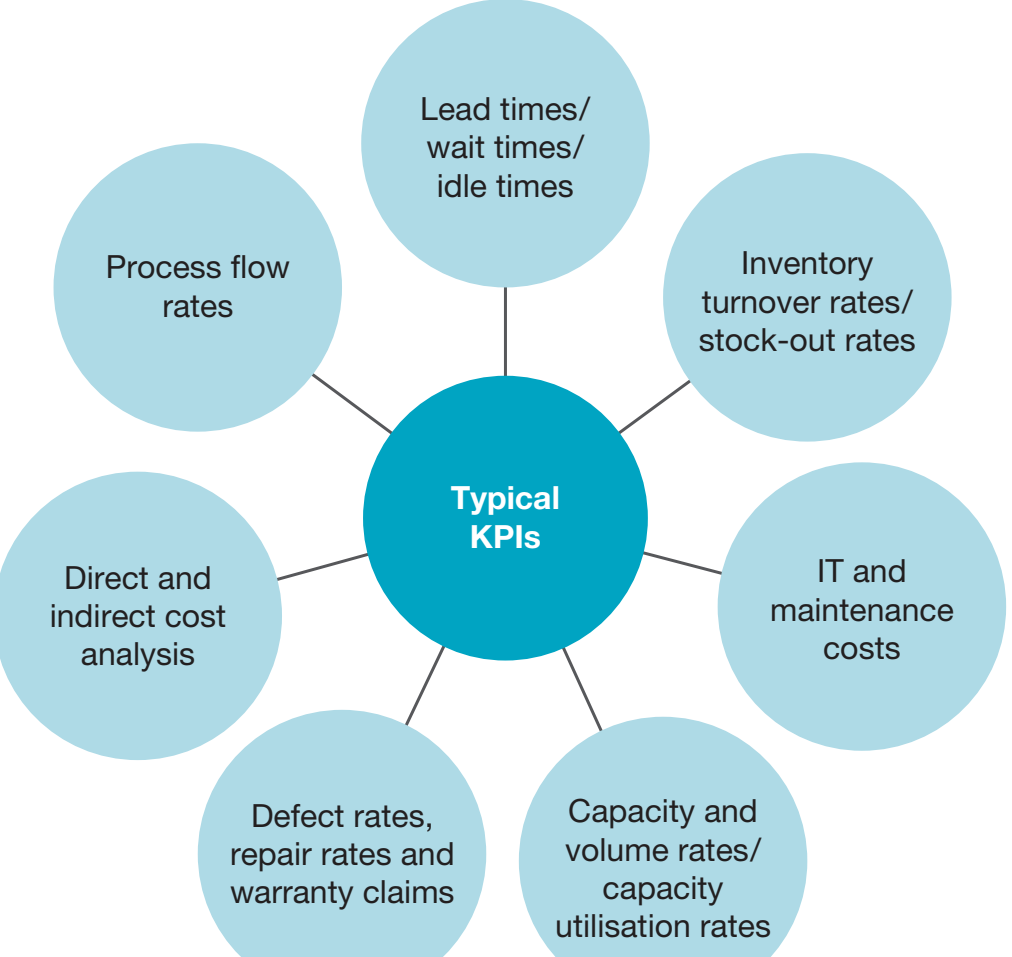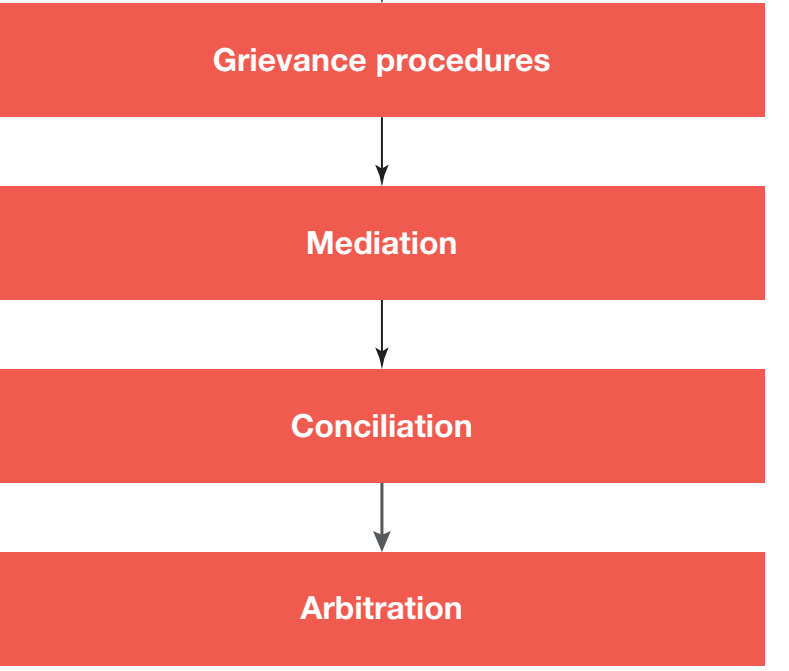Photo AI
Last Updated Sep 24, 2025
Effectiveness of HR Management Simplified Revision Notes for SSCE HSC Business Studies
Revision notes with simplified explanations to understand Effectiveness of HR Management quickly and effectively.
495+ students studying
Effectiveness of HR Management
Corporate Culture
Understanding Corporate Culture
- Corporate Culture: Shared values, beliefs, and norms within an organisation. It can be likened to the "atmosphere" that extends beyond the visible aspects. For example, a company fostering innovation might regularly engage in creative activities and encourage risk-taking.
- Role in HR Effectiveness:
- HR Effectiveness: Enhances employee morale, engagement, and productivity.
- A robust culture augments HR functions. At Kathmandu, open communication significantly boosts employee morale.
Impact on HR Indicators
- Staff Turnover and Absenteeism:
- Positive cultures typically reduce turnover and absenteeism rates.
- Workplace Safety:
- A strong safety culture minimises incident occurrences.
- Worker Satisfaction:
- Constructive practices elevate job satisfaction.
- Disputation Levels:
- Promotes collaboration, thus decreasing disputes.
Assessment Techniques
- Employee Surveys and Feedback:
- Surveys offer insights into employee perceptions. Example: "Do you feel valued by the organisation?"
- HR Audits and Benchmarking:
- Enables comparison of HR practices against industry standards.
Success Initiatives
- Kathmandu's Cultural Initiatives:
- Team-building Activities: Foster cooperation and camaraderie.
- Flexible Work Environments: Enhance work-life balance.
- Recognition Programmes: Validate and honour hard work.
HR Interventions: Mentorship and diversity initiatives positively influence culture, promoting inclusivity and innovation.
Tables
| Cultural Aspect | Impact on HR Indicator |
|---|---|
| Trust | Reduces turnover and improves collaboration. |
| Inclusivity & Diversity | Boosts innovation and enhances team productivity. |
| Recognition | Increases employee satisfaction and retention. |
| Communication | Enhances teamwork and reduces disputes. |
Visual Aids
-

Depicts the effect of culture on HR indicators. -

Illustrates assessment methods. -

Displays cultural initiatives and their impact.
Additional Engagement
- Reflection Question: How can enhanced inclusivity boost team creativity?
Benchmarking Key Variables in HR Management
Definition and Purpose
Benchmarking: Evaluating performance by comparison with other organisations or industry standards.
- Purpose:
- Identify areas of strength and improvement.
- Align with strategic goals to increase competitiveness.
Interesting Fact: Benchmarking emerged at Xerox Corporation in the 1970s to improve manufacturing by studying competitors.
Importance for HR Management
- Insights into performance: Offers a clear view of current standing relative to industry peers.
- Competitive Analysis: Aids decision-making by identifying areas for improvement.
- Practical Example: A company learns superior training strategies by benchmarking its development programmes against industry leaders.
Key Variables to Benchmark
- Employee Productivity:
- Assesses efficiency by comparing output to labour input.
- Essential for gauging worker effectiveness.
- Study Illustration: TechCorp increased productivity by 10% following benchmarking.
Example Summary: DE Inc used productivity benchmarks to pinpoint process improvement areas.
-
Employee Development:
- Centres on skill enhancement and career progression.
- Impact: Boosts satisfaction and retention.
- Example: ABC Corp refined career paths through external benchmarking.
-
Staff Turnover Rates:
- Measures retention effectiveness compared to industry standards.
- Impact: Reduces recruitment expenses.
-
Absenteeism Rates:
- Assesses attendance trends to address workforce issues.
- Insight: High absenteeism may indicate dissatisfaction or health concerns.
-
Safety Compliance:
- Monitors incidents and adherence to safety protocols.
- Crucial for reducing risks.
Techniques and Tools
-
Data Analytics:
- Utilising analytics tools like SAP SuccessFactors, Workday, and visualisation software.
- Provides comprehensive reports and dashboards.
- Real-World Application: Enhances HR processes and performance evaluations.
-
Comparative Benchmarking:
- Internal: Benchmark within departments.
- External: Compare with similar organisations.
- Key function: Identifies competitive strengths or areas needing improvement.
Challenges and Strategies
Common Challenges
-
Data Reliability:
- Accuracy and timeliness are crucial.
- Pitfall Example: Misalignment with strategic goals can lead to incorrect benchmarks.
-
Resource Allocation:
- Effective utilisation of human and financial resources is essential.
Strategies for Improvement
Data Integrity: Regular checks and audits ensure data accuracy.
-
Goal Alignment:
- Align metrics with business objectives to track progress.
-
In Practice:
- XYZ Ltd improved productivity by focusing on specific training informed by benchmarking insights.
Diagrams
-

- Explanation: Displays the steps for precise benchmarking.
- Exam Tip: Familiarise yourself with each step for potential questions.
-

- Interpretation: Presents comparisons to industry norms.
-

- Use: Illustrates how data visualisation enhances decision-making.
Additional Resources
- Website: SampleAnalytics.org
- Reading: "Benchmarking in HR: Best Practices and Case Studies."
Definition and Measurement
-
Definition of Staff Turnover: Staff Turnover refers to the rate at which employees leave a company within a specific period. It is crucial for assessing organisational stability.
-
Measurement Techniques:
- Equation:
- Implications:
- Financial Impact: Costs associated with hiring and training.
- Team Dynamics: Influences morale and productivity.
Definition of Staff Turnover: Staff Turnover quantifies employee exit rates over time, indicating organisational stability.
Causes and Impact
-
Factors Driving High Turnover:
- Job dissatisfaction due to unmet expectations.
- Attractive offers from external sources.
- Example: Departures prompted by competitors offering remote work benefits.
-
Impact on HR Management:
- Increased Recruitment Costs: Resources allocated for new hires.
- Knowledge Loss: Disrupts operations.
- Strategic Resource Diversion: HR reallocates focus.
- Example: High turnover shifts HR focus from strategic initiatives to recruitment.
Mitigation Strategies
-
Strategies at Kathmandu:
- Employee Engagement: Conducts feedback sessions, team-building activities, and career workshops.
- Industry Comparison: Adopts effective strategies learned from industry benchmarks.
-
Benchmarking Use:
- Define: Compares with industry to enhance practices.
- Advantage: Facilitates adoption of best practices and strengthens retention.
Visual Representation
- Turnover Trends:
- Visual aids offer clarity on turnover data.
- Typical trends: Stability, with anomalies highlighting potential issues.

Absenteeism
Understanding Absenteeism
- Absenteeism: Consistent work absence without authorisation. Indicates underlying challenges.
- Importance: Critical for identifying workplace issues. At Kathmandu, it's essential for detecting trends that impact stability.
Absenteeism affects global productivity, emphasising the need for corrective actions.
Indicators and Causes
-
Measurement Techniques:
- Monitor missed days to analyse trends and prevent burnout.
- Example: 10 absences over 100 workdays constitute 10% absenteeism.
-
High Absenteeism Alerts:
- Signals stress, mismanagement, or lack of motivation.
Rising absenteeism suggests deeper issues that require investigation.
Management Strategies
-
Flexible Work Hours:
- Kathmandu offers flexible scheduling to minimise absenteeism.
-
Wellness Initiatives:
- Health programmes reduce sick days by promoting wellness.
-
Effective Management:
- Strategies include setting clear goals to enhance morale.
-
Documentation:
- Track trends, such as increased sick leave during winter months.
Benchmarking Absenteeism
-
Comparative Analysis:
- Similar to academic test comparisons, businesses benchmark against industry standards.
-
Benchmarking Challenges:
- Variability in data and lack of standardisation.
Benchmarking aligns Kathmandu with industry standards, clarifying performance.
Diagrammatic Analysis
Absenteeism Rates

Notice frequent peaks and identify potential causes.
Strategy Impact

Management strategies effectively reduce absenteeism.
Kathmandu vs. Industry

Observe Kathmandu's competitive positioning.
Accidents in the Workplace
Workplace Safety Analysis
- Definition of Workplace Accidents: Unplanned events resulting in injuries within the workplace. Common examples include:
- Slips, trips, and falls
- Equipment-related incidents
Workplace Accidents: Unforeseen events causing harm within the workplace.
- Impact on HR:
- Reduces morale.
- Example: Morale declines following incidents.
- Decreases productivity.
- Financial Impact: Potential weekly loss of £500.
- Increases costs due to compensation and insurance claims.
- Reduces morale.
Measuring costs is essential to understand financial impacts on budgets.
Prevention Measures
-
Safety Protocols and Training:
- Kathmandu prioritises safety through employee testimonials.
- Regular drills and up-to-date protocols maintain workplace safety.
-
Regular Audits and Staff Involvement:
- Involving staff in safety committees cultivates a safety-oriented culture.
- Audits uncover and address issues proactively.
-
'Destination Safe' Initiative:
- Routine safety checks are standard practice, embedding safety into the workplace culture.
The 'Destination Safe' initiative embeds a robust safety culture.

Statistical Representation
-
Incident Rate Metrics:
- LTIFR gauges safety by measuring lost-time incidents.
-
Charts and Trends:
- Visuals illustrate Kathmandu's incidents against standards, highlighting improvement areas.

Trend charts provide valuable insights, identifying areas requiring attention.
Understanding Industrial Disputation
Levels of Disputation: Varies in intensity from minor disagreements to major industrial actions.
- Importance: Essential for ensuring workplace harmony and HR effectiveness.
- Offers insights into employee relations and potential productivity disruptions.
Impact
- Productivity: Disputes lead to reduced efficiency, affecting outcomes.
- Example: Unresolved disputes can decrease productivity by up to 15%.
- Cost Implications: Disputes raise costs due to operational interruptions.
- Highlights the importance of managing disputes to maintain a positive workplace environment.
Causes and Triggers
- Primary Causes:
- Health & Safety Negligence: Escalates conflict potential.
- Example: Safety gear shortages led to a week-long strike.
- Managerial Policy Conflicts: Occur when management actions clash with workforce expectations.
- Example: Shift changes led to worker protests, lowering morale.
- Union Disagreements: Intensify tensions over conditions.
- Social Protests: Reflect societal issues and heighten workplace conflicts.
- Health & Safety Negligence: Escalates conflict potential.
- Escalation Factors:
- Poor Communication: Misunderstandings amplify disputes.
- Lack of Mediation: Without impartial intervention, conflicts persist.
- Example: Early conflict resolution via mediation avoided disruptions.
Resolution Techniques
- Resolution Methods:
- Negotiation: Seeks mutual agreements through discussions.
- Mediation: Employs neutral parties to foster dialogue.
- Facilitates effective communication for efficient resolutions.
- Arbitration: Utilises impartial judgments to conclude disputes.

Case Study: Kathmandu
- Resolution Initiatives:
- Effective grievance handling reduced disputes by 30%.
- Negotiations led to higher satisfaction and reduced turnover.
Monitoring and Feedback
- Indicators and Tools:
- Grievance Counts: Track complaints to identify potential conflicts.
- Absenteeism: Rising rates may signal underlying disputes.

- Tributes and Procedures:
- Structured processes can prevent the need for formal resolutions by addressing issues early.
Essential Skills for HR Managers
- Proactive Problem Solving:
- Anticipating and resolving disputes is crucial.
- Strong Communication: Enhances dialogue effectiveness.
- Negotiation Skills:
- Essential for resolving disputes amicably.
Importance of Proactive HR Interventions
- Preemptive Role:
- Proactive HR strategies help identify and resolve potential conflicts before they intensify.
Worker Satisfaction
Worker satisfaction is central to effective HR management. This section discusses its significance, evaluation methods, broader HR implications, and enhancement strategies at Kathmandu.
Worker Satisfaction: Reflects employees' contentment with their roles and workplace.
Defining Worker Satisfaction
- Definition: Represents employees' contentment with their roles and environment.
- Significance: Measures the success of HR policies in creating a supportive workplace, emphasising HR's role in fostering motivation and well-being.
Indicators and Methods
- Measurement Tools:
-
Employee Surveys:
- Conducted regularly to gather employee feedback.
- Sample Queries: "How satisfied are you currently?", "What are areas for improvement?"
-
Feedback Mechanisms: Ongoing sessions and discussions for open input.
-
Exit Interviews: Assess departure reasons for strategic enhancements.
-
Impact on HR Areas
-
Turnover and Absenteeism:
- Low Satisfaction Consequences: Higher turnover and recruitment costs.
- High Satisfaction Benefits: Improved retention, productivity, and stability.
-
Overall Influence: Drives organisational success and enhances business outcomes.
Programmes Enhancing Satisfaction
- Development Programmes:
- Career growth initiatives maximise job satisfaction.
- Rewards and Recognitions:
- Programmes like Employee of the Month uplift morale.
- Wellness:
- Kathmandu promotes wellness through various events and support systems.
Specific Programmes in Kathmandu
- Development:
- Training workshops and career enhancements improve skills.
- Impact: 20% increase in satisfaction post-workshops.
- Recognition:
- Initiatives like "Most Innovative" awards acknowledge achievements.
- Impact: Improved retention following recognition programme implementation.
- Wellness Focus:
- Hosting wellness events and offering mental health support.
- Survey Results: 15% improvement in mental well-being.
Graphical Insights
- Data Visualisation: Illustrates team satisfaction levels in Kathmandu, linked to HR metrics, such as absenteeism.
High worker satisfaction is a strategic advantage for Kathmandu, boosting talent attraction and encouraging innovation.
500K+ Students Use These Powerful Tools to Master Effectiveness of HR Management For their SSCE Exams.
Enhance your understanding with flashcards, quizzes, and exams—designed to help you grasp key concepts, reinforce learning, and master any topic with confidence!
200 flashcards
Flashcards on Effectiveness of HR Management
Revise key concepts with interactive flashcards.
Try Business Studies Flashcards23 quizzes
Quizzes on Effectiveness of HR Management
Test your knowledge with fun and engaging quizzes.
Try Business Studies Quizzes1 questions
Exam questions on Effectiveness of HR Management
Boost your confidence with real exam questions.
Try Business Studies Questions27 exams created
Exam Builder on Effectiveness of HR Management
Create custom exams across topics for better practice!
Try Business Studies exam builder24 papers
Past Papers on Effectiveness of HR Management
Practice past papers to reinforce exam experience.
Try Business Studies Past PapersOther Revision Notes related to Effectiveness of HR Management you should explore
Discover More Revision Notes Related to Effectiveness of HR Management to Deepen Your Understanding and Improve Your Mastery
96%
114 rated
Kathmandu case study: Human resources
Kathmandu HRM Case Study
434+ studying
183KViews